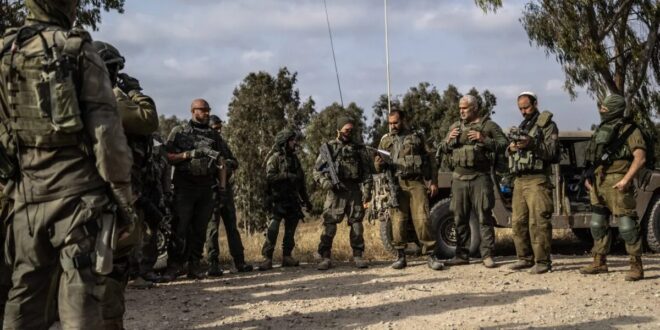In a startling revelation, documents obtained by Haaretz have confirmed that the Israel Defence Forces (IDF) implemented the controversial Hannibal Directive during the Hamas cross-border incursion on 7 October, and killed its own citizens. This confirmation comes after months of denial and attempts to discredit alternative news sources that had reported on the use of this contentious military protocol.
The Hannibal Directive has long been the subject of intense debate and criticism. It essentially authorises the use of maximum force to prevent the capture of Israeli soldiers and citizens, even at the risk of harming or killing the soldiers and citizens themselves.
According to the documents revealed by Haaretz, the decision to employ the Hannibal Directive was made in the early hours of the Hamas attack, as the IDF struggled to comprehend the scale and nature of the incursion. At 6:43am, with Hamas operatives breaching army strongholds, Gaza Division Commander Brigadier General Avi Rosenfeld declared that, “The Philistines have invaded.” This declaration set in motion a series of “extraordinary measures”, including the use of heavy fire within Israeli territory and the authorisation of the directive.
Communications recorded that morning further confirm that Israel was ready to kill its own citizens to avoid them being taken hostage. At 7:18am, following a report of a kidnapping at the Erez border crossing, the divisional headquarters issued the chilling command: “Hannibal at Erez, dispatch a Zik.” The “Zik” refers to an unmanned assault drone, and the implications of this order were clear: prevent the capture of Israelis at all costs.
Perhaps most disturbing was the blanket order issued at 11:22am which stated that, “Not a single vehicle can return to Gaza.” This directive, given at a time when the occupation soldiers were aware that many people had been kidnapped but were uncertain of the exact numbers, effectively meant that Israeli citizens were seen as necessary collateral damage. A source from the Southern Command admitted to Haaretz: “Everyone knew by then that such vehicles could be carrying kidnapped civilians or soldiers. There was no case in which a vehicle carrying kidnapped people was knowingly attacked, but you couldn’t really know if there were any such people in a vehicle.”
The implementation of the Hannibal Directive wasn’t limited to a single location. The documents and testimonies reveal that it was employed at multiple sites, including the Re’im army base and the Nahal Oz outpost. At Re’im, drone attacks were ordered even as Shaldag commando forces were engaged in combat with Hamas fighters on the ground, raising the alarming possibility of friendly fire casualties.
A senior defence official acknowledged to Haaretz the weight of these decisions: “Anyone making such a decision knew that our combatants in the area could be hit as well.”
The confirmation of the Hannibal Directive’s use on 7 October vindicates the reporting of several alternative news outlets that had been dismissed or smeared for making such claims. This pattern of initial denial followed by eventual confirmation has become all too familiar in the reporting about 7 October. It is argued that it reflects a broader issue within mainstream media, where Israeli narratives are often accepted uncritically, only to be retracted later or modified as contradictory evidence emerges.
This cycle of misinformation and delayed correction has significant implications for public understanding of the conflict. It raises questions about the reliability of initial reports and the potential manipulation of media narratives. The time lag between the alternative media’s reporting and mainstream confirmation can allow false narratives to take root, shaping public opinion and potentially influencing policy decisions. Critics point to the alleged atrocities that turned out to be hoaxes, such as the beheading of babies by Hamas and mass rape, to argue that Israel spread a false narrative to garner support and justification for its genocide in Gaza.
The use of the Hannibal Directive on 7 October also brings into sharp focus the ethical considerations surrounding military protocols in hostage situations. While the IDF has long maintained that the directive is intended to prevent kidnappings rather than harm captives, the practical application of such a policy in the chaos of combat raises serious legal, ethical and humanitarian concerns.
 Eurasia Press & News
Eurasia Press & News




